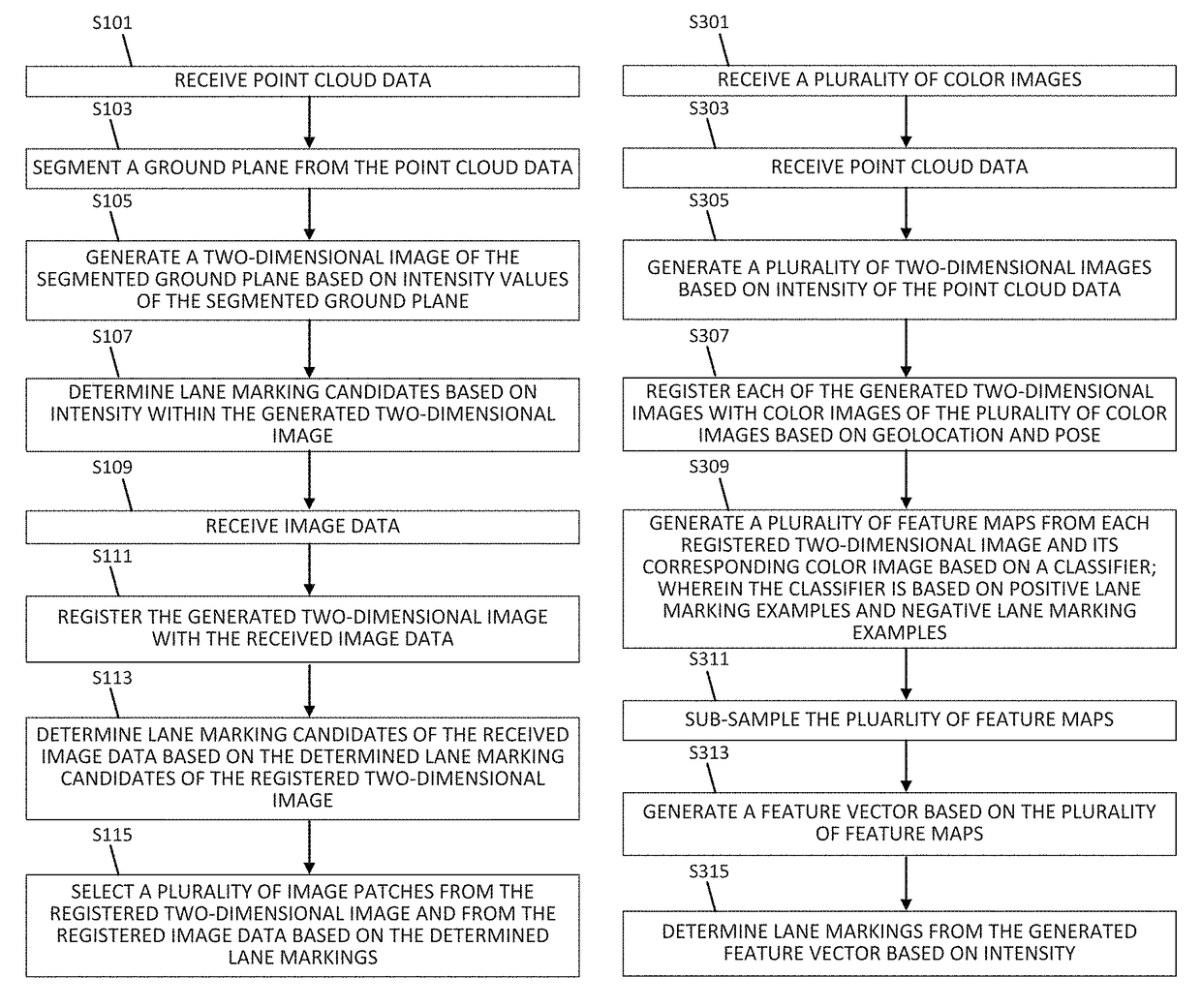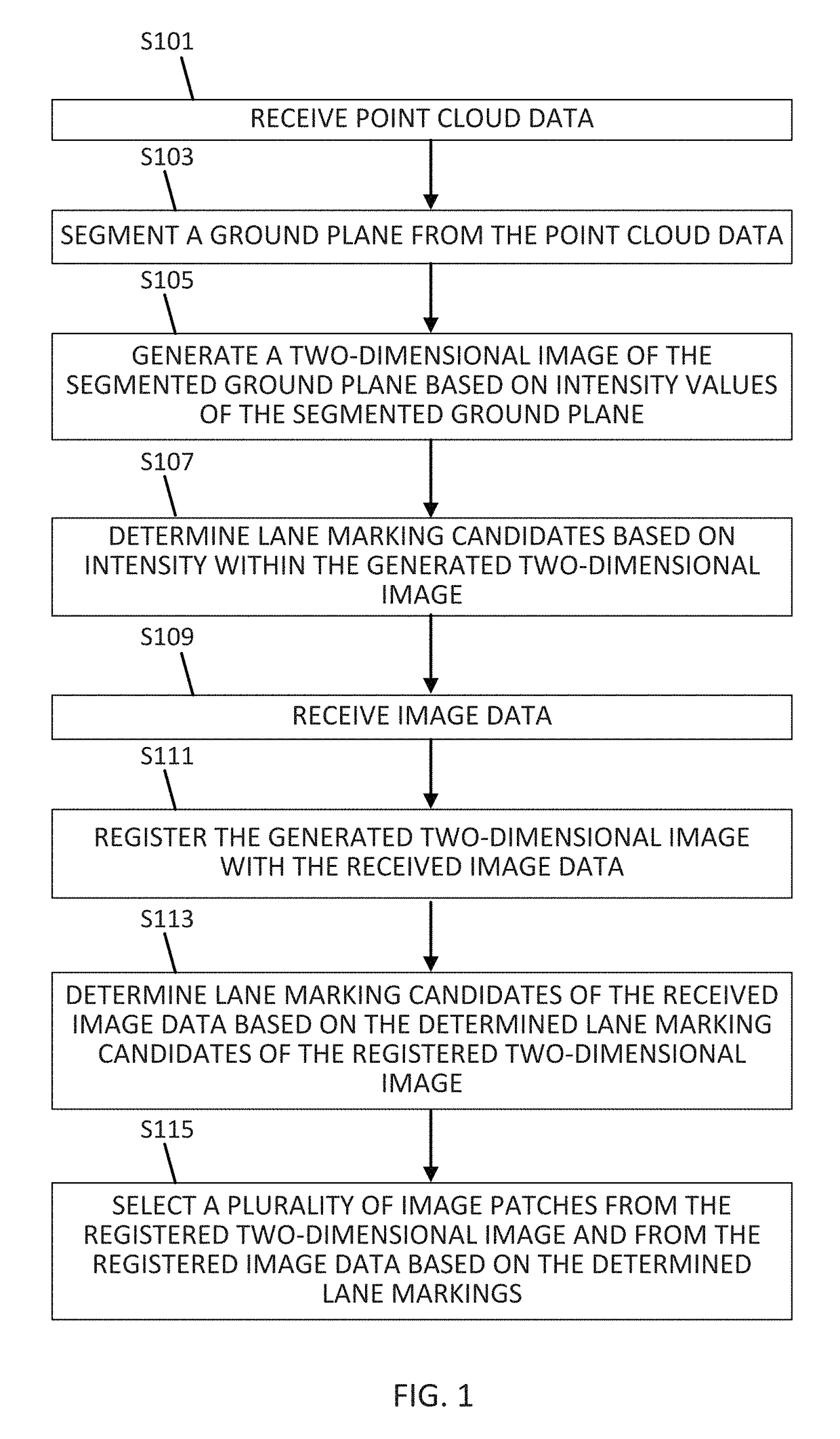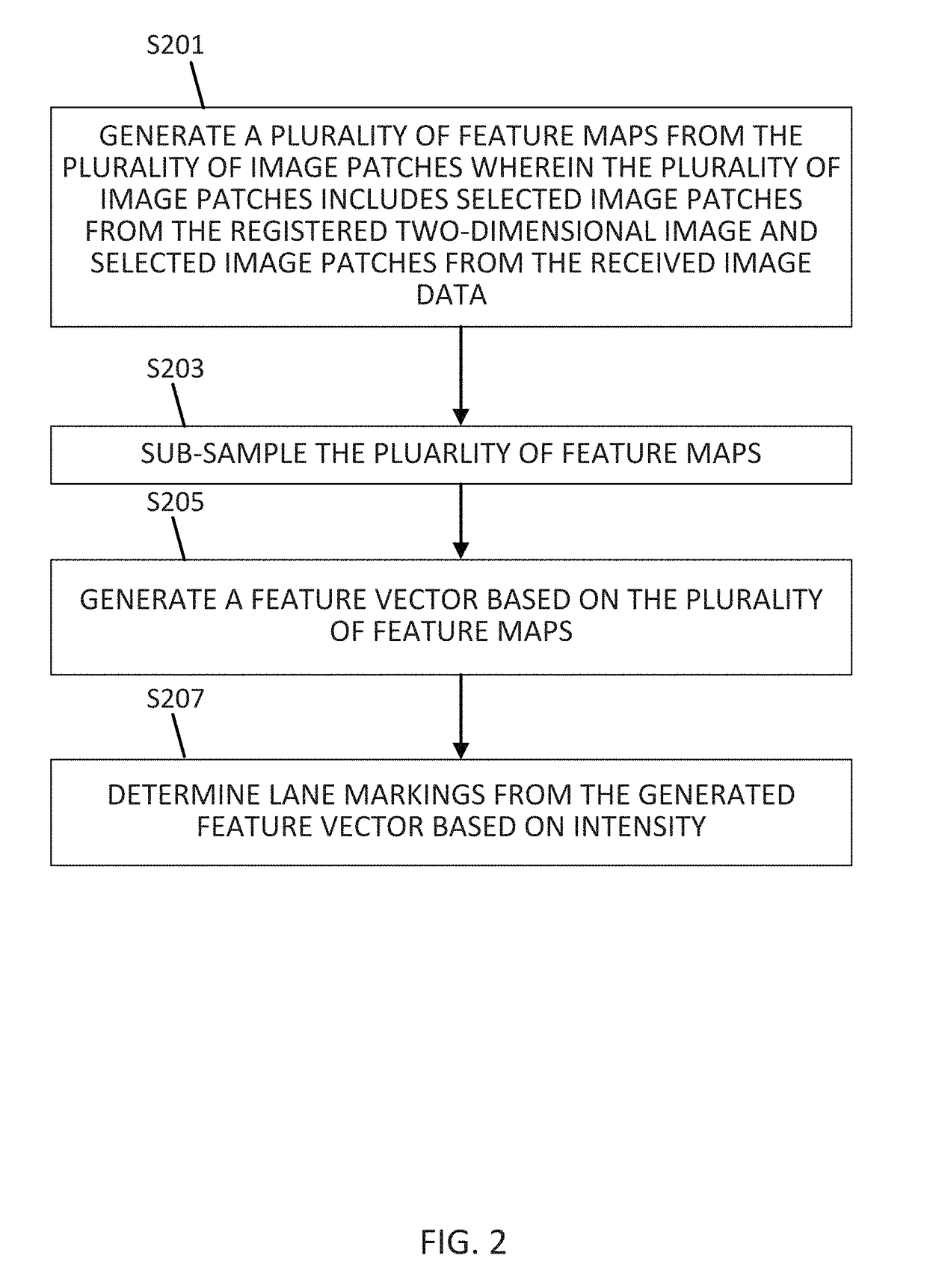Fusion of RGB images and LiDAR data for lane classification
a technology of lane classification and fusion of color images and point cloud data, applied in image enhancement, reradiation, instruments, etc., can solve the problems of high cost of lidar data acquisition to acquire frequent changes in lane markings, difficulty in accurate current image-based lane marking and classification, and inability to accommodate a variety of driving and lighting conditions
- Summary
- Abstract
- Description
- Claims
- Application Information
AI Technical Summary
Benefits of technology
Problems solved by technology
Method used
Image
Examples
Embodiment Construction
[0019]Lane markings may be painted on roadways using reflective paint. The reflectivity of the paint can be identified in point cloud data set based on its infrared reflective intensity. One challenge in using this information is the presence of other high intensity areas in the point cloud data set, which may include guardrails, cars, grass, road signs, and the like. Machine learning algorithms can be used to remove areas of high intensity that are not lane markings. The subject technology for lane classification uses the fusion of color images and point cloud intensity data train convolutional neural networks (CNNs) in order to classify image patches as lane markings and non-lane markings.
[0020]One goal of the disclosure is to use the fusion of point cloud data and images to extract lane markings. A further goal of the disclosure is to depart from handcrafted feature approaches by using deep learning methods to determine lane markings and classification. A further goal of the disc...
PUM
 Login to View More
Login to View More Abstract
Description
Claims
Application Information
 Login to View More
Login to View More - R&D
- Intellectual Property
- Life Sciences
- Materials
- Tech Scout
- Unparalleled Data Quality
- Higher Quality Content
- 60% Fewer Hallucinations
Browse by: Latest US Patents, China's latest patents, Technical Efficacy Thesaurus, Application Domain, Technology Topic, Popular Technical Reports.
© 2025 PatSnap. All rights reserved.Legal|Privacy policy|Modern Slavery Act Transparency Statement|Sitemap|About US| Contact US: help@patsnap.com



